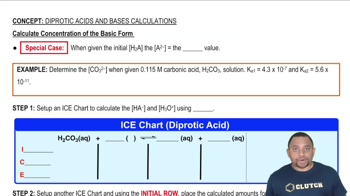Here are the essential concepts you must grasp in order to answer the question correctly.
Chemical Equilibrium
Chemical equilibrium occurs when the rates of the forward and reverse reactions are equal, resulting in constant concentrations of reactants and products. In this state, the system is dynamic, meaning that reactions continue to occur, but there is no net change in concentration. Understanding this concept is crucial for analyzing equilibrium problems, as it allows us to apply the equilibrium constant (Kc) to find unknown concentrations.
Recommended video:
Chemical Equilibrium Concepts
Equilibrium Constant (Kc)
The equilibrium constant (Kc) is a numerical value that expresses the ratio of the concentrations of products to reactants at equilibrium, each raised to the power of their coefficients in the balanced equation. For the reaction N2(g) + 3 H2(g) ⇌ 2 NH3(g), Kc = [NH3]^2 / ([N2][H2]^3). This constant provides insight into the position of equilibrium and is essential for calculating unknown concentrations in equilibrium mixtures.
Recommended video:
Equilibrium Constant Expressions
Concentration Calculations
Concentration calculations involve determining the molarity of substances in a solution, which is defined as the number of moles of solute per liter of solution. In equilibrium problems, knowing the concentrations of some species allows us to use the Kc expression to solve for unknown concentrations. This requires careful manipulation of the equilibrium expression and an understanding of stoichiometry to relate the concentrations of reactants and products.
Recommended video:
Calculate Concentration of the Basic Form




